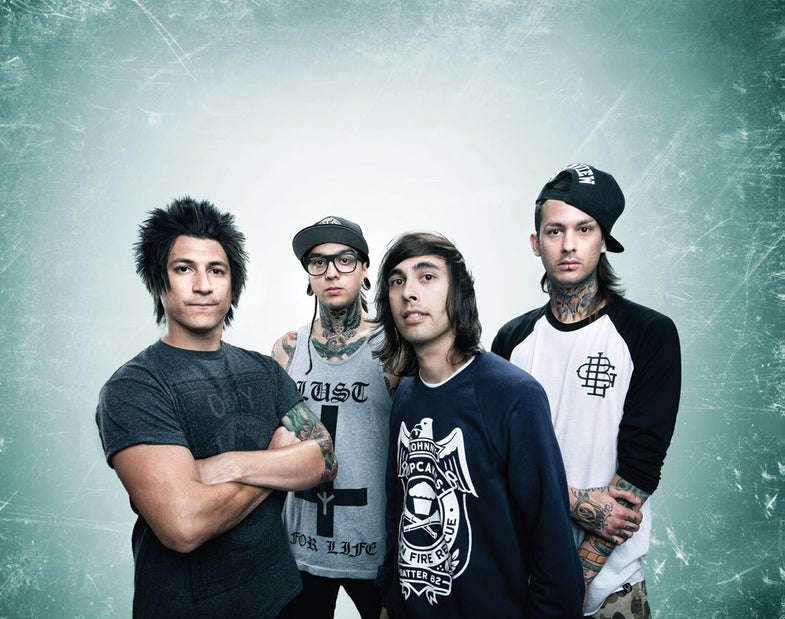Complex, Three-light Setup
Bring in a third (or fourth) light to make your subjects pop

While a key light will “find” your subject, and a second light can open up or shape the shadows, two lights alone can sometimes fall short. That’s why three-point lighting is probably the most common form of studio portrait lighting today. The three “points” are the key and fill lights that handle the subject, plus a third light to take on other tasks.
The most common of these is illuminating your background. Place a light immediately behind or to the side of your subject, and aim it toward the backdrop to emphasize detail, color, and texture. Its role is to add a suggestion of character, mood, or ambience to the portrait. By lighting part (but not all) of a background, you can also create shadows (or falloff) that can minimize distracting background elements.
Another common task performed by a third light is rim lighting. Place a light behind and aimed at the back of your subject to outline the outer contours with white light. This will better define your subject’s shape or line, and it can also separate a subject from a similarly toned background. The outline etched by a rim light can also come in handy later, helping to more easily extract a subject for compositing. Adam Elmakias used it that way for the rock band portrait above.
A third light can also serve as an accent or kicker light. With a highly-focused, soft-edge spotlight, you can subtly open up specific shadows, bring out the modeling of rounded shapes, or create hot spots that draw a viewer’s eye.
Finally, put that third light on a boom above and slighty behind your subject and aim it down at the hair. Focused with barndoors or a snoot, it will draw attention to the color, style, and texture of the coif, as well as separate head and background.
Rock-band specialist Elmakias has yet another role for the third light: “I like my guys to pop, and the way I do it is by surrounding them by soft light from all sides to fill as many shadows as possible. The look is flat and cartoony, but is surreal and larger-than-life, too.” Elmakias puts three lights on his subjects, with the main light as close as possible, for maximum softness and minimal shadows. Then he adds side and back lights, placed high, to fill in any shadows created by the key light. “Keep in mind that every time you add a light, it means more things can go wrong,” he warns.
For a shot like this, he poses and lights each musician individually. “I start with one person. Pose him and test the lights, then add the next and test the lights again.”
“Ninety percent of my pictures with multiple lights don’t work” he says. “Every time a subject moves, there’s a new shadow to deal with.”
But the ones that do work? Killer.

To front-light his portrait of the rock band Pierce the Veil, Adam Elmakias used an Alien Bees B1600 monolight inside a 7-foot Photoflex Octodome softbox (A). He side- and backlit the musicians with two Alien Bees B800 monolights inside 47-inch (B) and 35-inch (C) foldable Paul C. Buff octoboxes. The side light (B) eliminated shadows on the subjects’ shoulders, while the backlight (C) rimlit the group, making it easier for Elmakias to extract them from the background in post. His original background was a roll of white seamless paper (D).